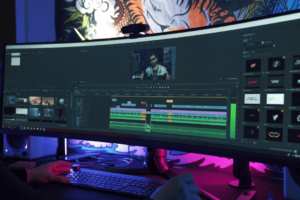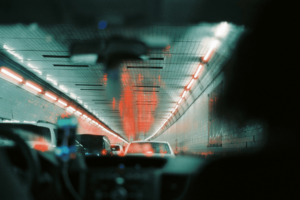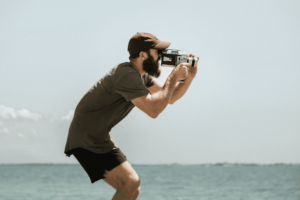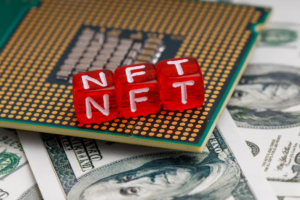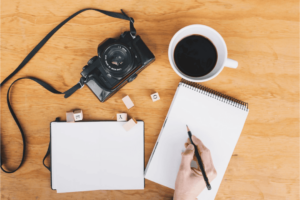Drone filming is revolutionizing the way people make films and television programs. Making a drone film, or a film with some drone footage, isn’t too different from making a regular film. Both processes use the same three stages of production:
- Pre-production: Planning stage for developing story and shot list, scouting locations, getting permissions, and gathering equipment
- Production: Filming stage
- Post-Production: Editing stage
What Are the Benefits of Drone Filming?
Drone filming is a dynamic type of aerial filming with several benefits for filmmakers:
- Reduced cost for aerial footage compared to helicopters
- Filming in small or confined spaces helicopters cannot access
- Capture new perspectives outside the usual vision from the ground
- Capture many different things from the air, such as landscapes, sporting matches, and buildings
Understanding the Laws, Regulations, and Guidelines
Strict laws, regulations, and guidelines govern the use of drones for filming and other recreational purposes. The Federal Aviation Administration (FAA) sets the national rules, under Title 14 Code of Federal Regulations (14 CFR) Part 107. In the United States, commercial and recreational drone users must register their drones with the FAA. Users must mark their registration number on their drone and carry proof of registration with them whenever they fly. Drones should weigh less than 55 pounds, unless certified by a community organization. Drone pilots also need flight plans, licenses, and insurance before filming. Several states also have their own rules and recommendations. Regardless of where you live and the laws applicable to you, you should always follow these general guidelines:
- Know how to operate your drone safely and do so at all times
- Understand your legal requirements
- Keep your drone in sight at all times
- Don’t fly your drone close to people, buildings, or vehicles outside your control
- Do not fly over people, unless you have an FAA waiver
- Fly during the day, 30 minutes before sunrise, or 30 minutes after sunset, unless you have an FAA waiver
- Keep your drone away from aircraft, airports, and emergency response efforts
- Fly no higher than 400 feet and no faster than 100 mph
- Ensure all footage captured doesn’t violate privacy laws
- Be aware of your surroundings
- Have a plan for addressing problems, such as unexpected crashes or power losses
What Are the Drone Models for Creating Good Videos?
There are several great drones that suit filmmakers. Do your research to find a drone with the features you want at a price you can afford. Assessing the following drones is a great starting point:
- DJI Mavic 2 Pro
- DJI Mavic 2 Zoom
- DJI Mavic Mini
- DJI Mavic Air 2
- DJI Matrice 600
- DJI Phantom 4 Pro V2.0
- DJI Inspire 2
- DJI Spark
- Yuneec Breeze
- Autel EVO II
- PowerVision PowerEgg X Wizard
- PowerVision PowerEye
- PowerVision PowerRay ROV
- Parrot Anafi FPV
- Ryze Tello
Piloting a Drone
Piloting a drone can be difficult, so spend time practicing before filming splits your attention. Master taking off, steadying the drone in the air, making simple shapes, and landing. Make use of any helpful technology like advanced landing capabilities. Once you feel confident, you can start drone filming.
Carefully Configuring Your Drone and Camera
You cannot adjust your settings in the air, so configure your drone and camera before takeoff. You should adjust your:
- Drone’s preferences and sensitivity settings to match your skill set
- Drone’s inertial measurement unit to track location, flight path, and speed
- Camera’s gimbal for steady, level vision
- Camera ISO and aperture settings for the conditions
- Camera aspect ratio to suit your plans for the footage (16:9 for film, 3:2 or 4:3 for still images)
The Importance of Carrying Out a Pre-Flight Checklist
Carrying out a pre-flight checklist minimizes the risk of failure and gives you confidence that your shoot will succeed. Your checklist doesn’t have to be a detailed list, but it should provide peace of mind. Some items you might check are:
- Drone settings
- Camera settings
- Drone battery
- System firmware updates
- SD card for formatting
- Drone license, filming permits, and other documents
Always Be Mindful of Your Battery Levels
Many drones can fly for no more than 15 minutes. Losing track of time during filming is easy, but it could be disastrous. Some advanced drones will land safely when their battery runs out, but many do not. Setting an alarm at the 10-minute mark can give you time to complete your shoot and land your drone safely.
Capturing Perfect Drone Footage
Once you’re confident piloting your drone, start experimenting with its filming capabilities. It takes more than being a strong drone pilot to capture good footage. Use these tips to help you capture the best drone footage.
Plan Your Flight Shoots
Careful planning can help you make the most of every drone filming session. Consider the following factors before taking off:
- The ideal airspace
- Weather
- Local obstructions
- What you want to capture and how
Perfect the Art of Panning and More Drone Shots To Master
The simple technique of panning provides a bird’s-eye perspective of a drone’s surroundings. It is sometimes called a bird’s-eye shot. This technique requires smooth, steady flying. Once you’ve mastered it, try the following more advanced filming techniques:
- Slide-sides: Captures a subject passing by a drone flying at a consistent altitude
- Fly-throughs: Captures footage from a drone flying through a narrow area, such as between two close buildings
- Reveal: Reveals a subject by flying over it backward until it’s in frame or bringing it into focus
- Flying backward: Offers a unique perspective and ensures propellors and prop shadows aren’t in frame
- Orbit: Captures footage from a drone circling an object in the center of a frame
- Tracking shot: Follows a moving subject, usually from behind
It’s All About the Angles
Altering your filming angle can create real visual impact. Filming at the same level as your subject keeps the subject in focus. However, you could also experiment with low and high angles.
Slow and Steady
Making slow, steady movements will give you the best drone footage. When you want to change your flight path or angle, make several small adjustments. Large changes can create unsteady, jerky footage that’s difficult to watch. Be conscious of wind levels, as they can make flying more challenging.
Choose Interesting Subjects
Your drone footage will only be as interesting as the subjects you capture. Landscapes can be beautiful, but capture some native wildlife in your shot and it’ll become much more interesting. A still cityscape in the early morning can be eerie, but wait a few hours and the traffic will bring the scene to life.
Use of Filters and Features
Filters and features can enhance your drone footage. Many drones have special filming features, such as center points for framing shots better. Make use of all your drone’s features for the most professional footage. Some drone cameras also take filters to reduce overexposure in bright light and make colors more vibrant. Only use filters made by drone companies. These are made to work with drones and their sensitive centers of gravity.
Save to an SD Card
SD cards save much higher quality footage than drones can. They can also hold more footage. Choose an appropriately sized SD card to make sure you don’t run out of storage space.
Pay Attention to Post-Production
Post-production provides an opportunity to enhance your drone footage. Editing and the addition of music or sound effects can really bring drone footage to life. If you use a coloring profile on your regular film footage, add it to your drone footage, too. Some of the best video editors include:
Sharing Your Film
Once you’ve created your film using drone footage, consider how you’ll get people to view it. You could upload it to a video sharing site such as YouTube or Vimeo. Alternatively, you could submit it to a film festival. There are several film festivals that specialize in drone films, including:
- New York City Drone Film Festival
- Drone Film Festival Australia & New Zealand
- London Drone Film Festival
- Madrid Drone Film Festival
- Flying Robot International Film Festival
Their juries look for high-definition films that are well-shot and well-edited. Drone filming can greatly enhance your films and other video presentations. To learn more about developing and applying techniques like drone filming, join the Cinema Product Diploma program at Nashville Film Institute today.





